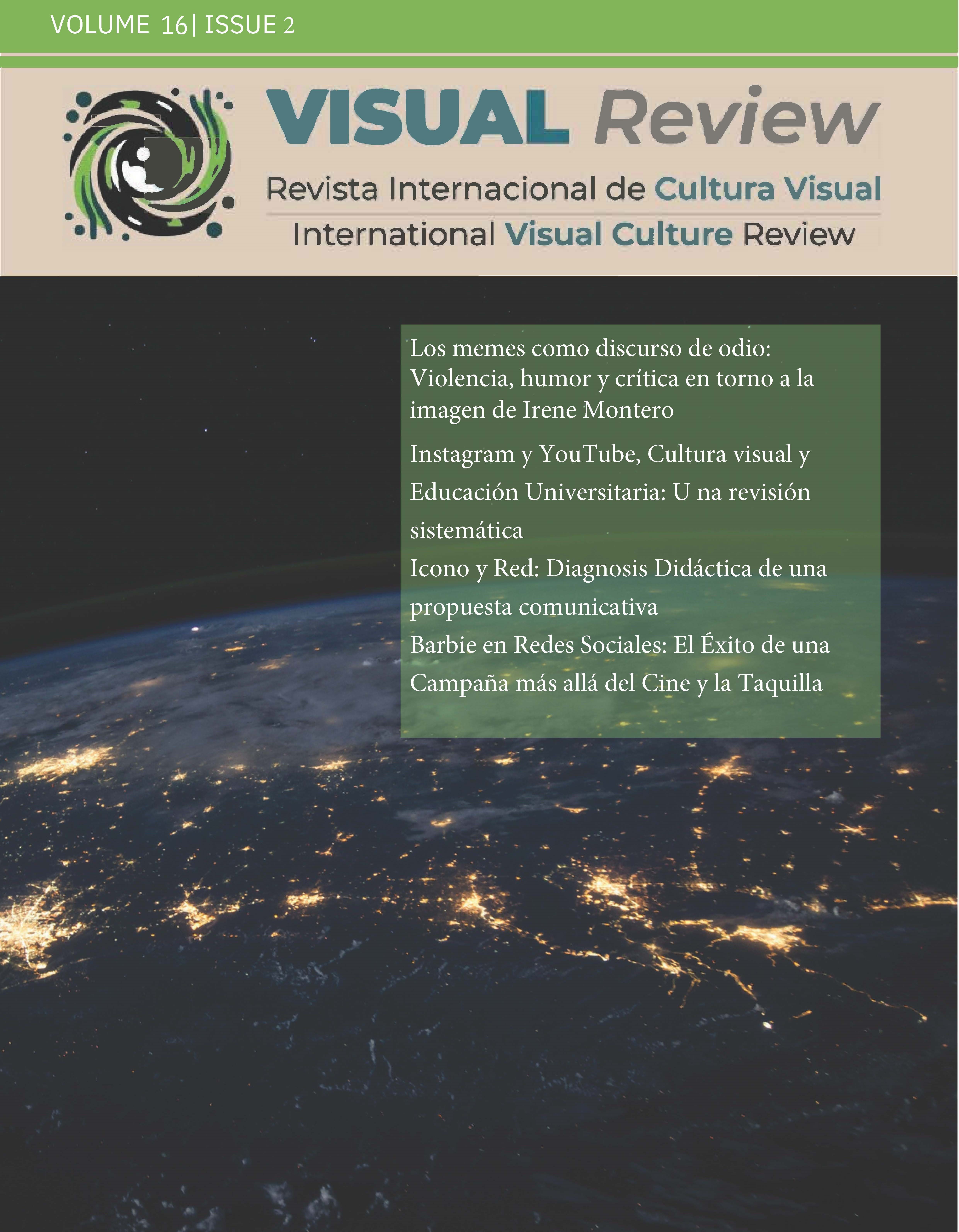Icon and Network
Didactic Diagnosis of Communication Proposals
DOI:
https://doi.org/10.62161/revvisual.v16.5224Keywords:
Communication, Design, Social networks, Didactics, Active methodologies, CreativityAbstract
This study places artistic and design praxis within the academic field, analysing —in a diagnostic way— the student's creative competencies in communication skills through the argument involved in the creation of a post conceived as an introductory mechanism for an advertising project. The methodology establishes a review of teaching innovation procedures applied to a practical activity belonging to a Communication´s degrees subject. The expected results suggest the didactic relevance of increasing certain student´s creative capacities through different design interventions applied in the communicative environment related to social networks.
Downloads
Global Statistics ℹ️
|
353
Views
|
108
Downloads
|
|
461
Total
|
|
References
Bayley, S. (1993). Guía Conran del Diseño. Alianza Forma.
Bonazzoli, F. & Robecchi, M. (2014). De Mona Lisa a los Simpson. Por qué las grandes obras de arte se han
convertido en iconos de nuestro tiempo. Lunwerg.
Cebrián, M. (2005). Información multimedia. Soportes, lenguaje y aplicaciones empresariales. Pearson
Prentice Hall.
Echeita, G. (2012). El aprendizaje cooperativo al servicio de una educación de calidad. En Torrego, JC. &
Negro, A. (Coords.). Aprendizaje cooperativo en las aulas. Fundamentos y recursos para su
implantación (pp. 21-45). Alianza Editorial.
Fernández, J. D. (2014). Mecanismos estratégicos en publicidad: De la USP a las lovemarks. Advook.
Ferreiro, R. & Calderón, M. (2006). El ABC del aprendizaje cooperativo. Publidisa.
González, E. & Zariquiey, F. (2012). Las TIC y el Aprendizaje Cooperativo. En Torrego, JC. & Negro, A.
(Coords.). Aprendizaje cooperativo en las aulas. Fundamentos y recursos para su implantación.
(pp. 207-238). Alianza Editorial.
Hellín, P. (2007). Publicidad y valores posmodernos. Visionnet-Siranda.
Johnson, W. & Johnson, R. (2014). La evaluación en el aprendizaje cooperativo. Cómo mejorar la
evaluación individual a través del grupo. SM.
Labarta, F. (2014). Guía para crear mensajes y contenidos publicitarios. El briefing creativo. Almuzara.
Lansdown, J. (1986). Computer-Aided Architectural Design Futures. Butterworth-Heinemann.
Mahon, N. (2010). Dirección de Arte: Publicidad. Gustavo Gili.
Marı́n-Díaz, V. & Cabero-Almenara, J. (2019). Las redes sociales en educación: desde la innovación a la
investigación educativa. RIED. Revista Iberoamericana de Educación a Distancia, 22(2), pp. 25-
http://dx.doi.org/10.5944/ried.22.2.24248 DOI: https://doi.org/10.5944/ried.22.2.24248
Moles, A. & Costa, J. (2005). Publicidad y diseño. El nuevo reto de la comunicación. Infinito
Munari, B. (2016). Diseño y comunicación visual. Contribución a una metodología didáctica. Gustavo Gili.
Pacheco, M. (Coord.). (2008). La publicidad en el contexto digital. Viejos retos y nuevas oportunidades.
Comunicación Social.
Pipes, A. (1989). El diseño tridimensional: del boceto a la pantalla. Gustavo Gili.
Prieto-Martín, A. (Coord.) (2017). Flipped Learning. Aplicar el Modelo de Aprendizaje Inverso. Narcea.
Puig, V. (2015). Social Media: 250 consejos prácticos para diseñar tu estrategia en las redes sociales. Ra-
Ma.
Reeves, R. (1997). La realidad en la publicidad. Un acercamiento a la teoría de la USP. Delvico Bates.
Santiago, R., Díez, A., & Andía, L. (2017). Flipped Classroom: 33 experiencias que ponen patas arriba el
aprendizaje. UOC.
Sola-Fernández, M. (2016). ¿Por qué es necesario innovar? En Fernández-Navas, M. & Alcaraz-
Salarirche, N. (Coords.). Innovación Educativa. Más allá de la ficción (pp. 41-52). Pirámide.
Van den Bossche, P. (2006). Minds in teams. The influence of social and cognitive factors on team
learning. Piet Van den Bossche.
Zariquiey, F. (2016). Cooperar para aprender. Transformar el aula en una red de aprendizaje
cooperativo. SM.
Downloads
Published
How to Cite
Issue
Section
License
Copyright (c) 2024 VISUAL REVIEW. International Visual Culture Review / Revista Internacional de Cultura Visual

This work is licensed under a Creative Commons Attribution-NoDerivatives 4.0 International License.
Those authors who publish in this journal accept the following terms:
-
Authors retain copyright.
-
Authors transfer to the journal the right of first publication. The journal also owns the publishing rights.
-
All published contents are governed by an Attribution-NoDerivatives 4.0 International License.
Access the informative version and legal text of the license. By virtue of this, third parties are allowed to use what is published as long as they mention the authorship of the work and the first publication in this journal. If you transform the material, you may not distribute the modified work. -
Authors may make other independent and additional contractual arrangements for non-exclusive distribution of the version of the article published in this journal (e.g., inclusion in an institutional repository or publication in a book) as long as they clearly indicate that the work was first published in this journal.
- Authors are allowed and recommended to publish their work on the Internet (for example on institutional and personal websites), following the publication of, and referencing the journal, as this could lead to constructive exchanges and a more extensive and quick circulation of published works (see The Effect of Open Access).













